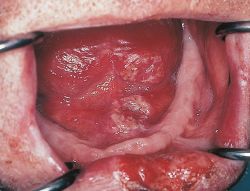Definition
Asthma is a chronic (long-lasting) inflammatory disease of the airways. In those susceptible to asthma, this inflammation causes the airways to spasm and swell periodically so that the airways narrow. The individual then must wheeze or gasp for air. Obstruction to air flow either resolves spontaneously or responds to a wide range of treatments, but continuing inflammation makes the airways hyper-responsive to stimuli such as cold air, exercise, dust mites, pollutants in the air, and even stress and anxiety.
Description
According to the American Lung Association, as of 2007, about 34.1 million Americans, including 9 million children, had been diagnosed with asthma during their lifetime. This number appears to be both increasing, especially among children under age 6, while at the same time the disease is becoming more severe. Asthma is estimated to cause between 3,500 and 5,000 deaths annually in the United States. In 2007, it was responsible for 217,000 emergency room visits and 10.4 million office visits. Its estimated cost to the United States economy is $19.7 billion. Worldwide, asthma is estimated to affect 300 million people. Asthma is closely linked to allergies; about 75% of people with asthma also have allergies.
The changes that take place in the lungs of people with asthma makes the airways (the "breathing tubes," or bronchi and the smaller bronchioles) hyper-reactive to many different types of stimuli that do not affect healthy lungs. In an asthma attack, the muscle tissue in the walls of bronchi go into spasm, and the cells lining the airways swell and secrete mucus into the airways. Both these actions cause the bronchi to become narrowed (bronchoconstriction). As a result, an asthmatic person has to make a much greater effort to breathe in air and to expel it.
Cells in the bronchial walls, called mast cells, release certain substances that cause the bronchial muscle to contract and stimulate mucus formation. These substances, which include histamine and a group of chemicals called leukotrienes, also bring white blood cells into the area, which is a key part of the inflammatory response. Many individuals with asthma are prone to react to such "foreign" substances as pollen, house dust mites, or animal dander; these substances are called allergens. On the other hand, asthma affects many individuals who are not allergic in this way.
About two-thirds of all cases of asthma are diagnosed in people under age 18, but asthma also may first appear during adult years. While the symptoms may be similar, certain important aspects of asthma differ in children and adults.
